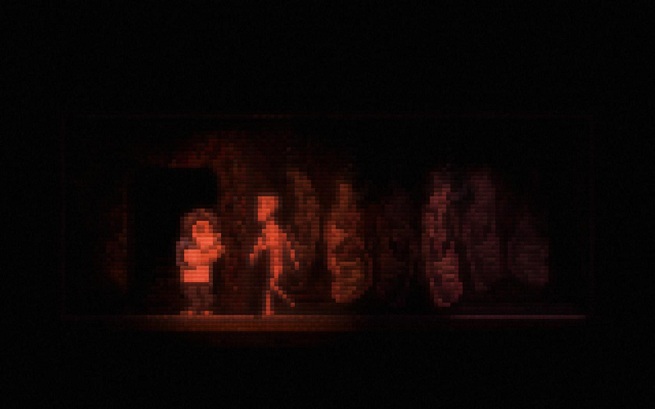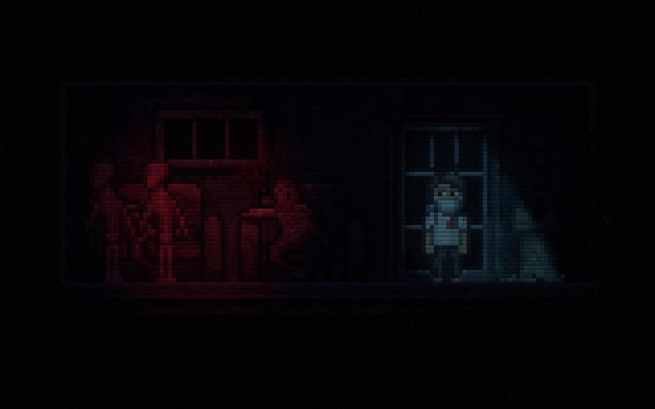WHAT YOU WON’T LIKE
Dying expressed through archaic gameplay concepts
For everything that Lone Survivor does right in regard to narrative, the game unfortunately stumbles with something so critical that it nearly ruins the entire experience: character death.

Lone Survivor takes a traditional approach: When I die, that’s it. Game over. Back to the title screen to load up my last save; the game just flat out forgets everything I’d done afterward. All the conversations I had, all the items I picked up, all the actions I took…gone.
But I don’t forget. I remember all this stuff. The tired save system forces me to re-experience every decision I made and go back through the all same motions. This unavoidably breaks the flow of the narrative, and for a story-based game, that’s a huge misstep.
This isn’t an unsolved problem in the medium. From Software’s Demon’s Souls and Dark Souls both correct this by using an autosave feature that records every step you take and every choice you make. When you die, you’re sent back to a static node in the level, but all important decisions you made carry with you. Items you found? Permanently collected. Conversations you had? Unerased. Death merely resets the obstacles in your path, not the choices you’ve made.
The end result is an uninterrupted play loop — even with setbacks, the game marches on regardless and flows naturally.
The tragedy here is that Lone Survivor employs an idea in its save method that would fit perfectly with this concept: You record your progress by sleeping in your apartment bed. Instead of seeing the game over screen upon death, it would have been more appropriate to rouse at home and perhaps comment on whether you were really awake or just dreaming. (All the references to sleep — the Sleepy Cat stuffed toy, green and blue sleeping pills, and notable dream sequences — would have certainly supported this narratively quite well).

CONCLUSION
Clearly, Byrne draws heavy inspiration from Silent Hill — most blatantly, he borrows from Akira Yamaoka’s soundscape of scraping machinery and gnashing teeth throughout Lone Survivor.
More importantly, the game’s best narrative trick — again borrowed from Silent Hill — is its mystery, leaving itself open to interpretation and examination. Who was the Man Who Wears A Box? The Seated Figure? The White-faced Man? Who was the brown-haired girl I held hands with in my dreams? The answers aren’t overtly clear, but I can’t wait to play again to find out.
Score: 89/100
Lone Survivor released on March 27, 2012 for PC.
VentureBeat's mission is to be a digital town square for technical decision-makers to gain knowledge about transformative enterprise technology and transact. Learn More
